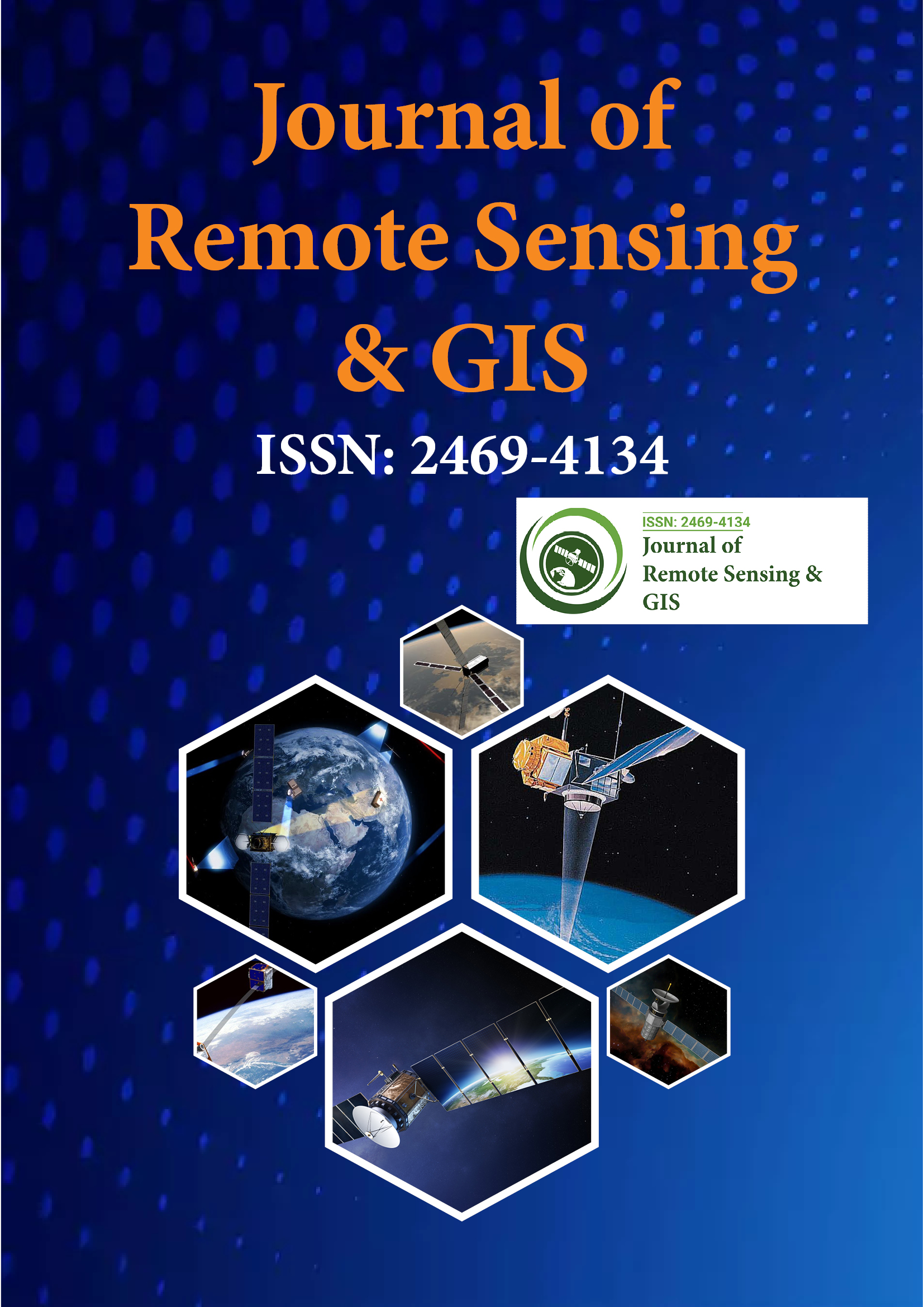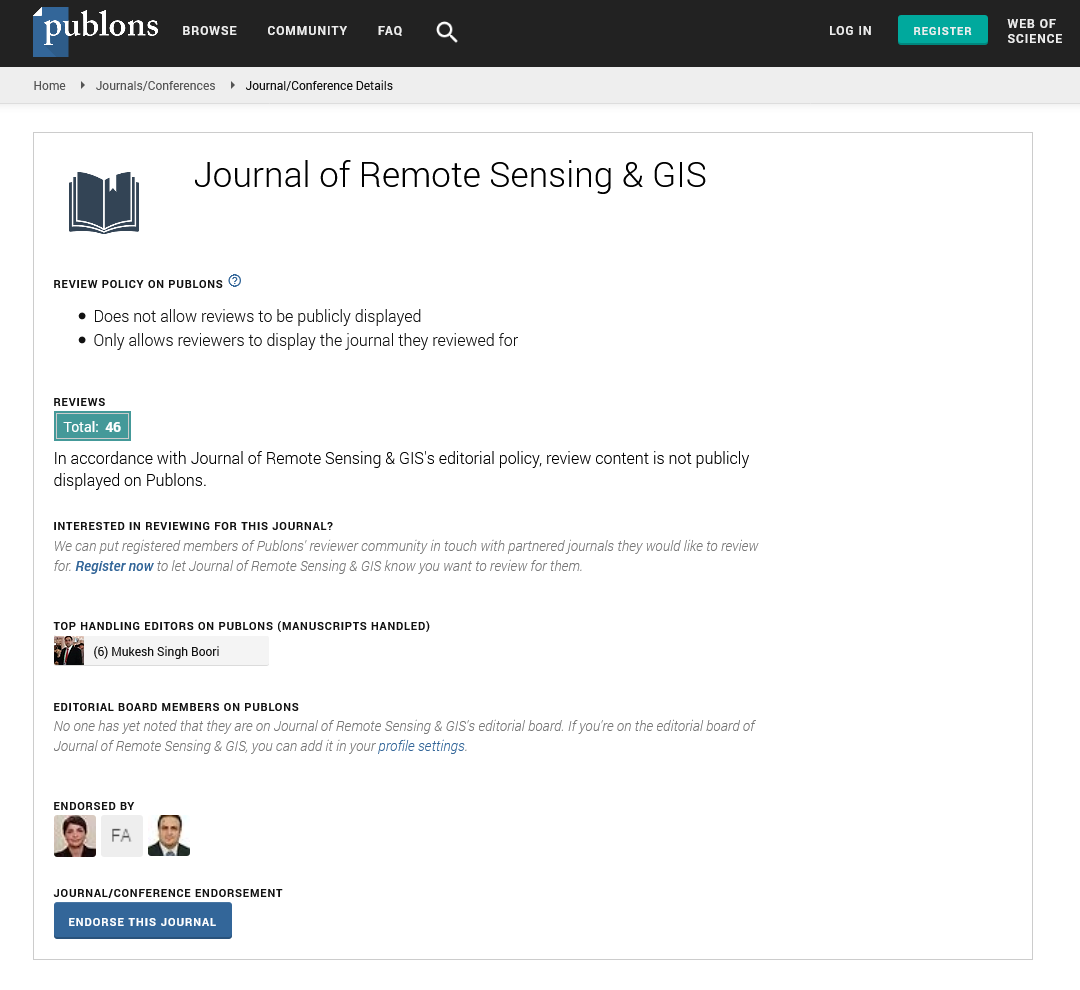Indexed In
- Open J Gate
- RefSeek
- Hamdard University
- EBSCO A-Z
- OCLC- WorldCat
- Publons
- International Scientific Indexing
- Euro Pub
- Google Scholar
Useful Links
Share This Page
Journal Flyer

Open Access Journals
- Agri and Aquaculture
- Biochemistry
- Bioinformatics & Systems Biology
- Business & Management
- Chemistry
- Clinical Sciences
- Engineering
- Food & Nutrition
- General Science
- Genetics & Molecular Biology
- Immunology & Microbiology
- Medical Sciences
- Neuroscience & Psychology
- Nursing & Health Care
- Pharmaceutical Sciences
Opinion Article - (2024) Volume 13, Issue 4
LiDAR Technology and its Precision in Remote Sensing and Mapping
Merlin Wang*Received: 25-Nov-2024, Manuscript No. JGRS-24-28067; Editor assigned: 27-Nov-2024, Pre QC No. JGRS-24-28067 (PQ); Reviewed: 12-Dec-2024, QC No. JGRS-24-28067; Revised: 20-Dec-2024, Manuscript No. JGRS-24-28067 (R); Published: 27-Dec-2024, DOI: 10.35248/2469-4134.24.13.367
Description
LiDAR (Light Detection and Ranging) remote sensing is an advanced technology that has revolutionized the way we gather detailed information about the Earth's surface. By emitting laser pulses and measuring the time it takes for the light to return, Lidar systems can create precise, three-dimensional representations of landscapes, structures and environments. This technique has become indispensable in various fields, including environmental monitoring, urban planning, forestry and geology.
Principles of Lidar technology
Lidar works by emitting rapid laser pulses from a sensor mounted on an aerial platform such as an aircraft, drone, or satellite. These laser pulses are directed towards the Earth's surface and when they hit objects, they reflect back to the sensor. By measuring the time, it takes for the pulse to travel to the surface and return, Lidar systems can calculate the distance between the sensor and the surface, which results in a highly accurate representation of the terrain.
Lidar systems typically generate point clouds dense clusters of data points that represent the surfaces and objects detected by the laser pulses. These point clouds are then processed to create Digital Elevation Models (DEMs), Digital Terrain Models (DTMs) and 3D models that can be analyzed in various Geographic Information Systems (GIS). The ability to capture topography, vegetation and built structures with exceptional precision makes Lidar an invaluable tool in many scientific and industrial fields.
Applications of Lidar remote sensing
Major applications of Lidar remote sensing are:
Topographic mapping and terrain modeling: Lidar is widely used in the creation of topographic maps and terrain models. It provides accurate data on the elevation of the land surface, which is critical for applications such as flood modeling, land-use planning and infrastructure development. By capturing fine details, Lidar can identify subtle variations in the landscape, such as small depressions or ridges, which might be missed by other remote sensing methods.
In flood modeling, for example, the accurate elevation data provided by Lidar helps predict floodwaters' behavior and potential impact on communities. Lidar also plays an essential role in the planning and design of infrastructure, such as roads and bridges, where precise measurements of terrain are necessary for ensuring the stability and safety of structures.
Vegetation and forest management: Lidar's ability to penetrate the forest canopy and measure the ground surface beneath has made it an indispensable tool in vegetation and forest management. It provides detailed information about tree height, canopy structure and vegetation density. By measuring the distance to the ground and the height of individual trees, Lidar systems can accurately estimate forest biomass, which is important for carbon sequestration studies and sustainable forestry practices.
Moreover, Lidar can help monitor forest health by detecting changes in canopy height and density, which may indicate stress caused by pests, diseases, or environmental conditions. This capability allows forest managers to make informed decisions about resource allocation and conservation efforts.
Archaeology and cultural heritage: Lidar has revolutionized the field of archaeology by enabling the discovery and mapping of ancient structures and sites that were previously hidden beneath dense vegetation or soil. By using Lidar to scan large areas of land, archaeologists can detect subtle variations in the ground surface that might indicate the presence of ancient roads, buildings and other cultural artifacts. This has led to the discovery of previously unknown civilizations and enhanced our understanding of historical landscapes.
In regions like Central America, Lidar has uncovered hidden cities and ceremonial complexes covered by thick jungle, offering insights into past human societies. This has opened new frontiers in archaeological research, allowing for non-invasive exploration of cultural heritage sites.
Advantages of Lidar remote sensing
One of the primary advantages of Lidar is its ability to collect highly accurate, three-dimensional data over large areas. Unlike traditional surveying methods, which can be time-consuming and labour-intensive, Lidar provides a fast and efficient way to collect spatial data in a variety of environments, including dense forests, rugged terrain and urban landscapes. This efficiency makes Lidar an ideal choice for applications that require detailed, large-scale mapping.
Lidar also shows superior accuracy in measuring elevation compared to other remote sensing technologies such as radar or photogrammetry. The precision of Lidar data makes it particularly useful for applications that demand high spatial resolution, such as flood modeling, infrastructure development and environmental monitoring.
Conclusion
Lidar remote sensing is a versatile and powerful technology that has transformed how we capture and analyse spatial data. Its applications span a wide range of fields, from urban planning and forestry to archaeology and environmental monitoring. The ability to create precise, three-dimensional models of the Earth's surface has made Lidar an essential tool for decision-makers, scientists and engineers working to understand and manage complex landscapes. As technology continues to advance, Lidar’s capabilities will only expand, enabling even greater insights into the world around us.
Citation: Wang M (2024). LiDAR Technology and its Precision in Remote Sensing and Mapping. J Remote Sens GIS. 13:367.
Copyright: © 2024 Wang M. This is an open-access article distributed under the terms of the Creative Commons Attribution License, which permits unrestricted use, distribution and reproduction in any medium, provided the original author and source are credited.

